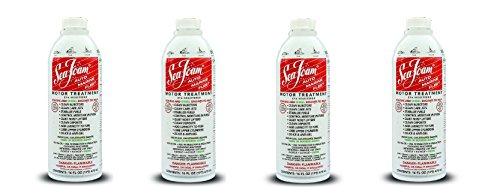Price
Sea Foam Motor Treatment 4-Pack (16 Oz)
Motor Treatment
The motor system is a complex network of structures responsible for the coordination and control of movement. It consists of various components, including the primary motor cortex, the premotor cortex, the supplementary motor area, the basal ganglia, and the cerebellum, each playing a crucial role in the execution of voluntary and involuntary movements.
The primary motor cortex, located in the posterior frontal lobe, is the main area responsible for the generation of motor commands. It is organized somatotopically, meaning that different regions of the body are represented in specific areas of the cortex. This organization allows for the precise control and coordination of individual muscle groups.
The premotor cortex, situated anterior to the primary motor cortex, is involved in the planning and preparation of movements. It helps in the selection and sequencing of appropriate motor actions based on sensory information and previous experiences.
The supplementary motor area, located on the medial surface of the frontal lobe, is crucial for the internal generation and coordination of complex, self-initiated movements. It is particularly important in the planning and execution of sequences of movements.
The basal ganglia, a group of subcortical structures, play a crucial role in the selection and initiation of voluntary movements. They are involved in the modulation of motor programs, the inhibition of unwanted motor responses, and the learning of new motor skills.
The cerebellum, situated at the base of the brain, is responsible for the fine-tuning and coordination of movements. It integrates sensory information and compares it with the intended movement, allowing for the correction of errors and the smooth execution of actions.
Motor disorders can arise from dysfunction in any of these components within the motor system. These disorders can manifest in various ways, such as impaired muscle control, decreased coordination, tremors, rigidity, or slowness of movement.
Rehabilitation interventions for motor disorders aim to address the underlying neurological impairments and to improve functional abilities. These interventions may include physical therapy, occupational therapy, and speech therapy, depending on the specific needs of the individual.
Physical therapy focuses on improving muscle strength, range of motion, and coordination through exercises, manual techniques, and the use of assistive devices. Occupational therapy, on the other hand, emphasizes the retraining of daily living activities and the adaptation of the environment to enhance independence and functional performance.
In some cases, pharmacological interventions, such as the use of medications or botulinum toxin injections, may be employed to manage specific motor symptoms or to facilitate the effectiveness of rehabilitation.
The goals of motor rehabilitation are to restore function, improve quality of life, and promote the individual's participation in meaningful activities. The approach is often tailored to the individual's needs, taking into account the specific motor impairments, the underlying causes, and the individual's goals and preferences.
Successful motor rehabilitation requires a comprehensive, multidisciplinary approach that combines various therapeutic strategies and incorporates the active participation and engagement of the individual. By addressing the complex interplay within the motor system, rehabilitation professionals can empower individuals with motor disorders to regain their functional abilities and enhance their overall well-being.
product information:
| Attribute | Value |
|---|---|
| best_sellers_rank | #3,906,165 in Automotive (See Top 100 in Automotive) #625 in Engine & Oil Fluid Additives |
| is_discontinued_by_manufacturer | No |
| batteries_required | No |













